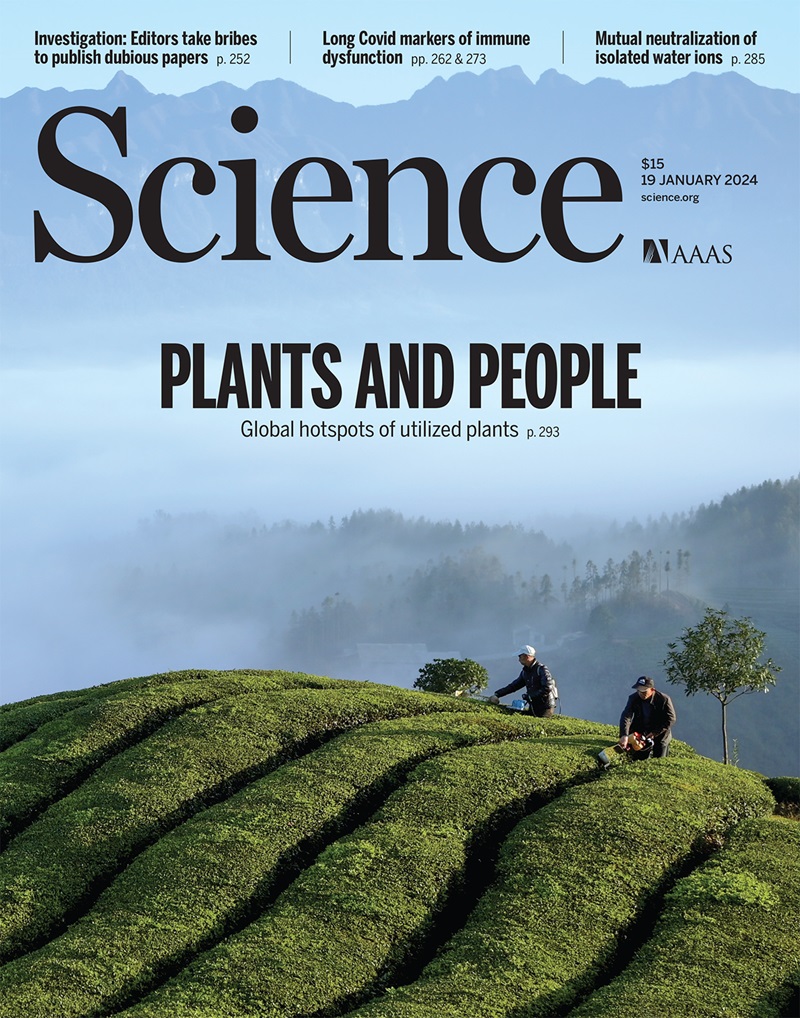New Perspectives in Cell Adhesion: RGD and Integrins
IF 44.7
1区 综合性期刊
Q1 MULTIDISCIPLINARY SCIENCES
引用次数: 4537
Abstract
Rapid progress has been made in the understanding of the molecular interactions that result in cell adhesion. Many adhesive proteins present in extracellular matrices and in the blood contain the tripeptide arginine-glycine-aspartic acid (RGD) as their cell recognition site. These proteins include fibronectin, vitronectin, osteopontin, collagens, thrombospondin, fibrinogen, and von Willebrand factor. The RGD sequences of each of the adhesive proteins are recognized by at least one member of a family of structurally related receptors, integrins, which are heterodimeric proteins with two membrane-spanning subunits. Some of these receptors bind to the RGD sequence of a single adhesion protein only, whereas others recognize groups of them. The conformation of the RGD sequence in the individual proteins may be critical to this recognition specificity. On the cytoplasmic side of the plasma membrane, the receptors connect the extracellular matrix to the cytoskeleton. More than ten proved or suspected RGD-containing adhesion-promoting proteins have already been identified, and the integrin family includes at least as many receptors recognizing these proteins. Together, the adhesion proteins and their receptors constitute a versatile recognition system providing cells with anchorage, traction for migration, and signals for polarity, position, differentiation, and possibly growth.
细胞粘附的新视角:RGD 和整合素
人们对导致细胞粘附的分子相互作用的认识取得了快速进展。细胞外基质和血液中的许多粘附蛋白都含有精氨酸-甘氨酸-天冬氨酸(RGD)三肽作为细胞识别位点。这些蛋白质包括纤维粘连蛋白、玻璃粘连蛋白、骨粘连蛋白、胶原、血栓软骨素、纤维蛋白原和冯-维勒布兰德因子。每种粘附蛋白的 RGD 序列都能被结构相关的受体整合素家族中的至少一种成员识别,整合素是具有两个跨膜亚基的异源二聚体蛋白。其中一些受体只与单个粘附蛋白的 RGD 序列结合,而另一些则能识别粘附蛋白群。单个蛋白质中 RGD 序列的构象可能是这种识别特异性的关键。在质膜的细胞质一侧,受体将细胞外基质与细胞骨架连接起来。目前已发现十多种证明或怀疑含有 RGD 的粘附促进蛋白,整合素家族中至少有同样多的受体可识别这些蛋白。粘附蛋白及其受体共同构成了一个多功能识别系统,为细胞提供锚定、迁移牵引以及极性、位置、分化和可能的生长信号。
本文章由计算机程序翻译,如有差异,请以英文原文为准。
求助全文
约1分钟内获得全文
求助全文
来源期刊

Science
综合性期刊-综合性期刊
CiteScore
61.10
自引率
0.90%
发文量
0
审稿时长
2.1 months
期刊介绍:
Science is a leading outlet for scientific news, commentary, and cutting-edge research. Through its print and online incarnations, Science reaches an estimated worldwide readership of more than one million. Science’s authorship is global too, and its articles consistently rank among the world's most cited research.
Science serves as a forum for discussion of important issues related to the advancement of science by publishing material on which a consensus has been reached as well as including the presentation of minority or conflicting points of view. Accordingly, all articles published in Science—including editorials, news and comment, and book reviews—are signed and reflect the individual views of the authors and not official points of view adopted by AAAS or the institutions with which the authors are affiliated.
Science seeks to publish those papers that are most influential in their fields or across fields and that will significantly advance scientific understanding. Selected papers should present novel and broadly important data, syntheses, or concepts. They should merit recognition by the wider scientific community and general public provided by publication in Science, beyond that provided by specialty journals. Science welcomes submissions from all fields of science and from any source. The editors are committed to the prompt evaluation and publication of submitted papers while upholding high standards that support reproducibility of published research. Science is published weekly; selected papers are published online ahead of print.
 求助内容:
求助内容: 应助结果提醒方式:
应助结果提醒方式:


